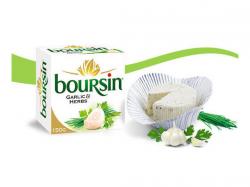How Boursin Taught Me What Cheese Could Be
January 4, 2017 | 1 min to read

Like many Americans, I grew up eating Cracker Barrel Cheddar, an aspirational purchase for my family. Cracker Barrel was real cheese, made from milk, cultures, and salt. This was a significant distinction back then, in the dark days before the artisan cheese revolution of the past twenty or so years, when “American cheese” was synonymous with processed cheese, not clothbound cheddar from Vermont or goat cheese from California.
I’d never heard of Boursin—everyone’s favorite “fancy cheese” (After all, it’s French!)—until college. Those “little herb-spiked, foil-wrapped, popular dollops that cost over $1 in most stores [but] go for 98 cents at Zabar's,” as New York Magazine noted in 1973, weren’t in my refrigerator. My working class town on Long Island didn’t have a Zabar’s. My grandfather did the food shopping at Food Town, where he regularly scored our Cracker Barrel (and Wheat Thins crackers, to eat it with).
In college, as the master of my own grocery list, Boursin became my “splurge” item, a self-designated entry into the creamy, salty, herbaceous world of adulthood, a way to celebrate the success of bringing home my first paychecks. I defined my burgeoning independence and striving worldliness through the sophistication of my grocery store purchases. My choice of Boursin, smeared on pita bread and topped with arugula (another exotic item that left me feeling au courant) was a symbol of how far I’d travelled beyond Cracker Barrel to fulfill my own aspirations.
To read the rest of the story, please go to: Bon Apetit
